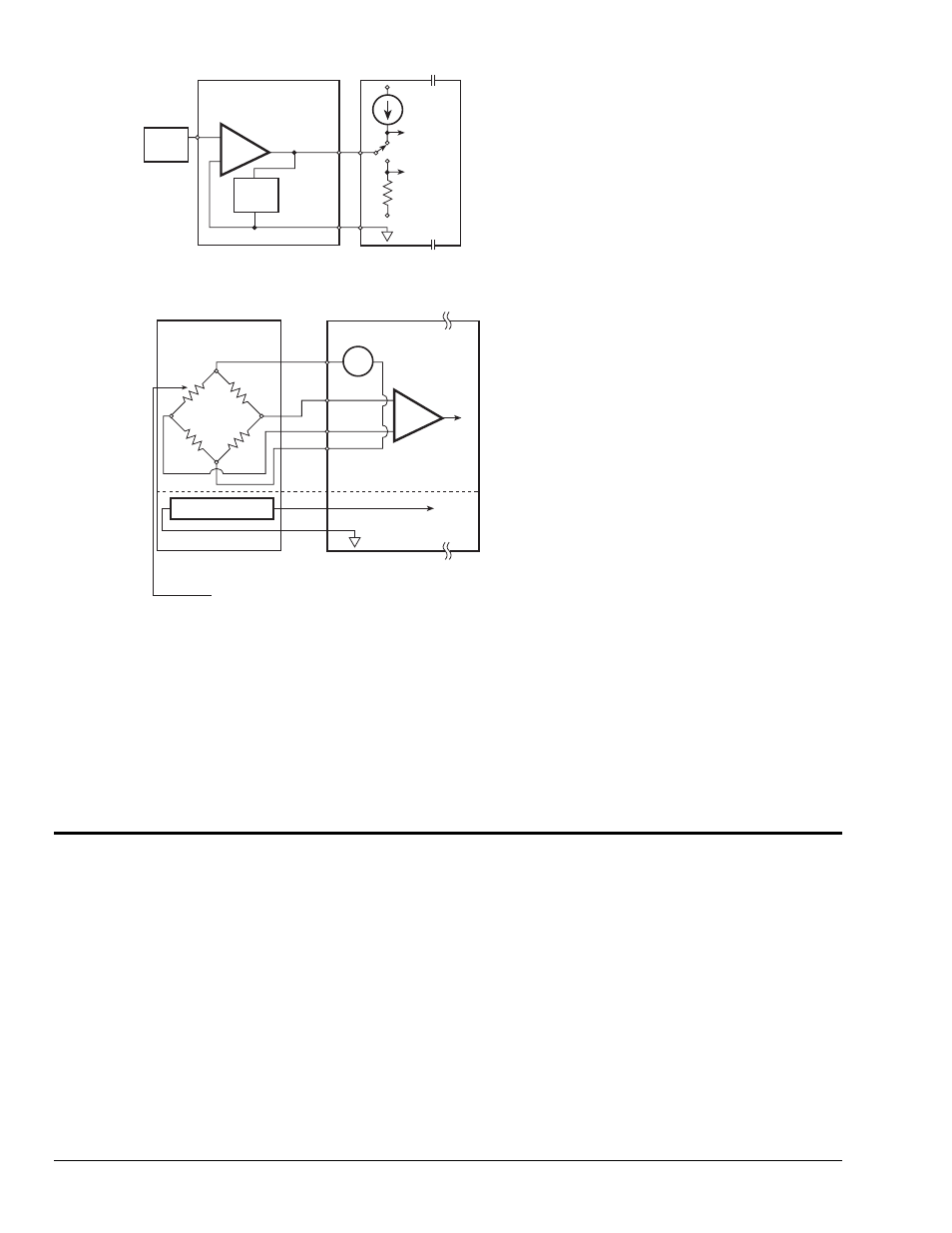Networks – Measurement Computing IOtech 640 Series User Manual
Page 94

C-2 TEDS
928693
Appendix
C
TEDS EEPROM
Sensor
A
+
Current
source
Analog
signal
Digital
signal
-5 V
Class 1 interface
Plug-and-play sensor
Data acquisition
system
Single-wire system
smart sensor
Fig. C.02. Class 1 sensors have only two leads that
connect to the input of the STIM. The analog signal
voltage and any required biasing voltage share the
same pair of leads.
+
Analog
signal
Class 2 interface
plug-and-play sensor
Data acquisition
system
Smart sensor
multi-wire system
A
_
V
Excitation
Digital
signal
Digital
TEDS EEPROM
Analog
Wheatstone Bridge strain gage
Fig. C.03. Class 2 sensors use multiple leads to
connect between the sensor and STIM. In the case of a
Wheatstone Bridge circuit, for example, four leads
connect the sensor and the other pair connects to the
onboard TEDS EEPROM, which illustrates the mixed-
mode application.
The TEDS file may be contained onboard the sensor in the EEPROM, or off board in a reserved file in the data
acquisition system. A number of transducer manufacturers plan to launch an Internet-accessible site where they list
sensors that presently do not contain a TEDS memory IC. Users may enter the serial number of their sensor and
obtain an equivalent TEDS specification to download. This lets application software programs work with both older
sensors and newer TEDS-equipped sensors.
Networks
The original intent of the TEDS concept is to handle arrays of smart sensors and actuators over various types of
networks. Different types of control networks now exist for both analog and digital communications, but most are
intrinsically incompatible with one another. And not all transducer manufacturers are either able or willing to
provide a unique sensor for each kind of network bus. As a consequence, they are increasingly turning to digital
networks controlled with microprocessors to develop a universally accepted interface that is more economical for
them to interconnect systems, networks, and instruments. The guiding document is the evolving IEEE 1451
standard, which also allows the new devices to be compatible with older and existing systems.
